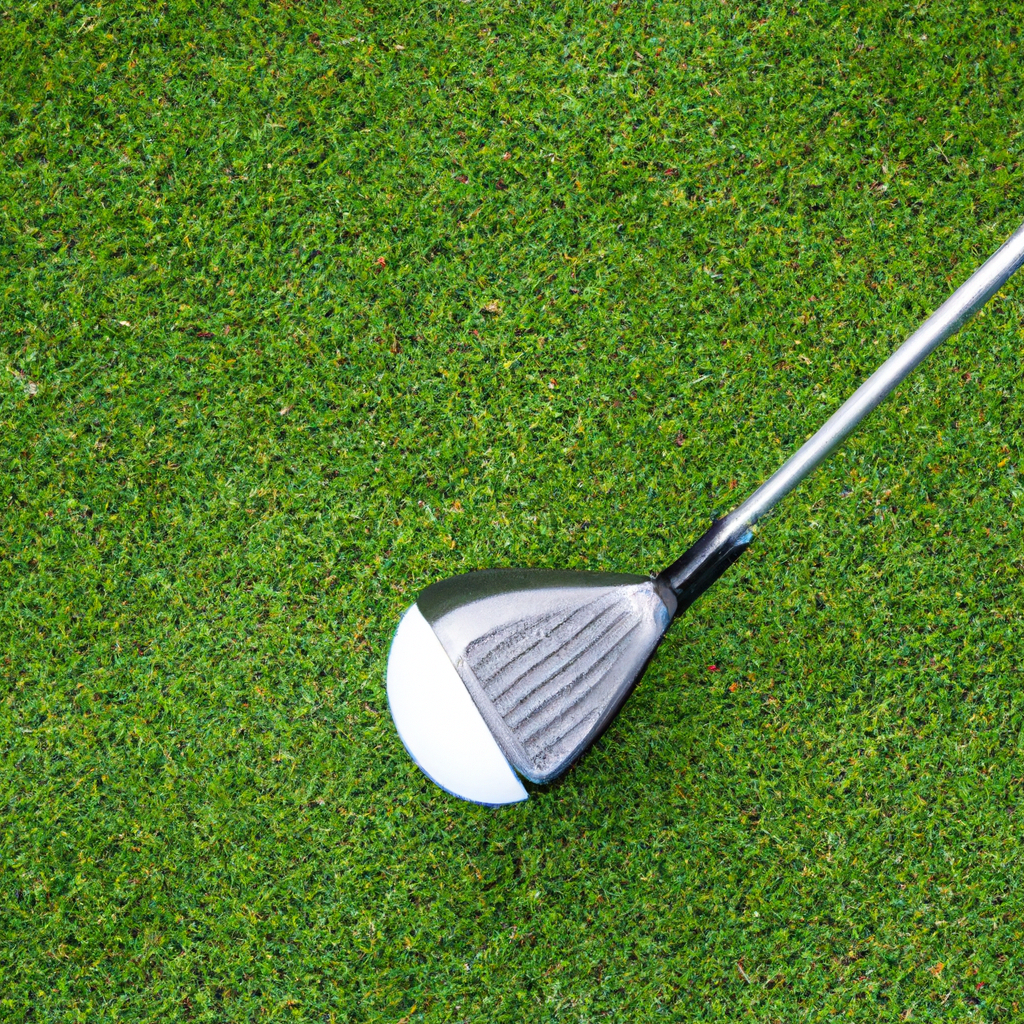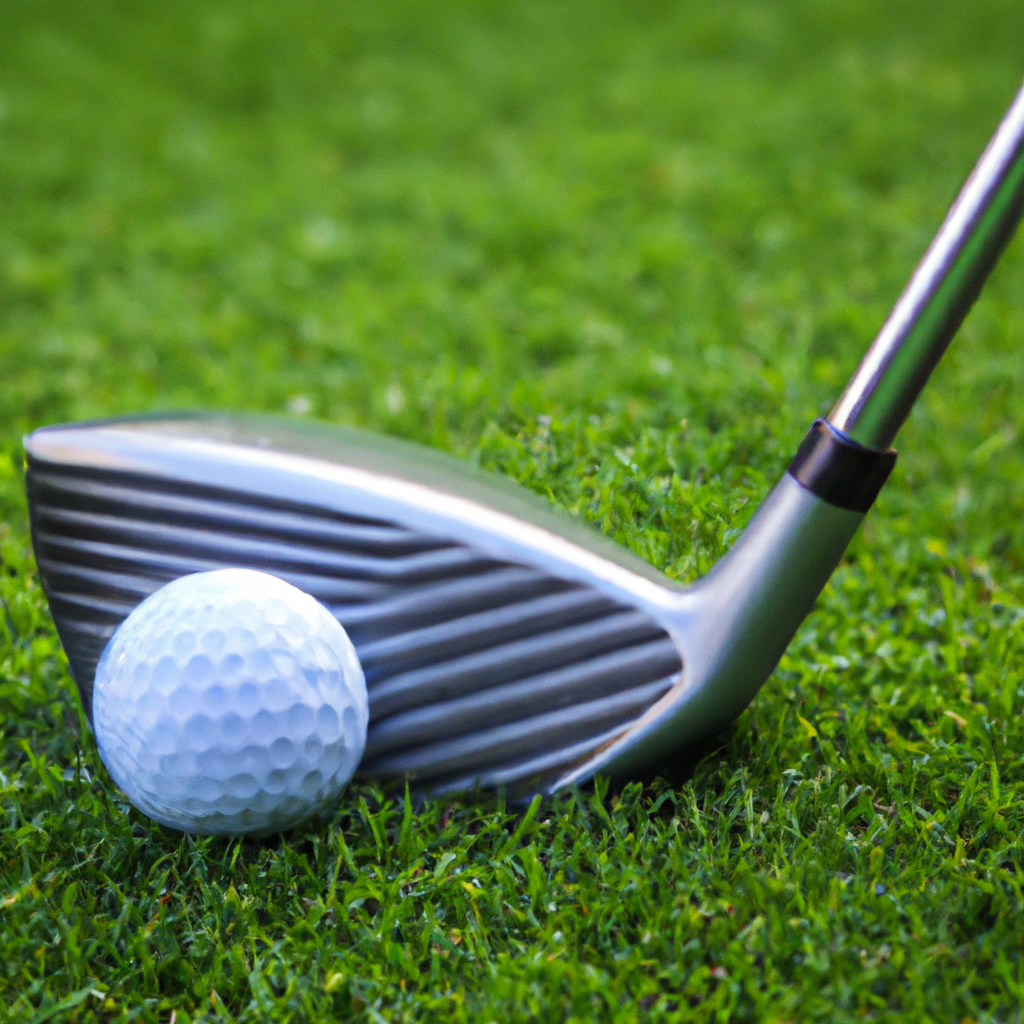We may earn money or products from the companies that may be mentioned in this post.
When it comes to playing golf, one of the most crucial factors in achieving a successful swing is positioning yourself at the proper distance from the ball. Getting too close or too far can greatly impact your overall performance on the course. In this article, we will explore the importance of finding the right distance to stand from the golf ball and provide some helpful tips on how to determine the ideal position for your swing. So, if you want to improve your game and achieve more accurate shots, read on to discover the key to finding the perfect distance from the golf ball.

The Importance of Proper Distance
Proper distance plays a crucial role in the game of golf. It not only affects your swing and shot consistency but also helps in avoiding injuries. By maintaining the right distance, you can improve your accuracy, create an optimal swing path, and adapt to different club selections. In this article, we will explore the factors to consider when determining your ideal distance, common mistakes to avoid, how to address specific shots, adjust for different clubs, adapt to terrain and lies, and the benefits of working with a professional. Let’s dive in!
Factors to Consider
When it comes to determining the proper distance to stand from the golf ball, several factors come into play. These factors include body proportions and flexibility, club length and loft, shot type, and club selection.
Body Proportions and Flexibility
Your body proportions and flexibility greatly impact the distance you should stand from the golf ball. Taller golfers with longer arms might need to stand slightly farther back, while shorter golfers with shorter arms may need to stand a bit closer. Additionally, your flexibility levels play a crucial role in determining the optimal distance. More flexible individuals may stand slightly farther away to allow for a full range of motion during their swing.
Club Length and Loft
The length and loft of your golf clubs also influence the distance you should stand from the ball. Longer clubs, such as woods, generally require a slightly farther stance compared to shorter clubs like wedges and irons. The loft of the club also affects the ideal distance. Higher lofted clubs, like wedges, may require you to stand closer to the ball to achieve the desired trajectory.
Shot Type and Club Selection
Different shot types and club selections call for variations in distance. For example, when hitting a driver off the tee, you may want to stand a bit farther back to maximize power and distance. Conversely, when hitting a fairway shot or a controlled approach shot, standing slightly closer to the ball can enhance accuracy and consistency.
Determining Your Ideal Distance
Finding your ideal distance starts with getting into a natural stance and experimenting with different distances. The key is to observe the ball flight and contact during your swings.
Finding Your Natural Stance
To find your natural stance, start by aligning your feet with your shoulder-width apart. Your knees should be slightly flexed, allowing for proper mobility and balance. Stand tall with a relaxed posture, keeping your weight evenly distributed on both feet. From this position, you can make slight adjustments to find the most comfortable and natural stance for you.
Experimenting with Different Distances
Once you have your natural stance, it’s time to experiment with different distances. Start by standing slightly closer to the ball and hit a few shots. Observe the ball flight, the contact made, and how comfortable and balanced you feel. Then, gradually increase the distance, hitting shots at each new position. Pay attention to the changes in ball flight, contact, and your overall swing mechanics.
Observing Ball Flight and Contact
The most important aspect of determining your ideal distance is observing the ball flight and contact. Look for a consistent, solid ball contact that results in the desired trajectory and distance. If you find that the ball is consistently slicing or hooking, you may need to adjust your distance accordingly. Take note of your swing mechanics and how the ball reacts to changes in distance.

Common Mistakes to Avoid
There are a few common mistakes golfers make when it comes to distance from the ball. By avoiding these mistakes, you can improve your swing and overall performance.
Standing Too Far
One of the common mistakes is standing too far from the ball. When you stand too far back, you might have difficulty reaching the ball with the center of the clubface, leading to weaker shots and reduced accuracy. Additionally, an excessively far stance can hinder your swing path and result in inconsistent shots.
Standing Too Close
On the other hand, standing too close to the ball can cause your swing to be too steep, leading to topped or fat shots. It limits your body rotation and may result in a restricted swing. Standing too close can also increase the chances of hitting the ball off-center, resulting in inaccurate shots.
Inconsistent Distance
Maintaining a consistent distance from the ball is crucial for reliable and repeatable swings. If you vary your distance from shot to shot, it becomes challenging to develop consistency and accuracy in your game. Creating a consistent setup by standing at the same distance for each shot allows you to develop muscle memory and a reliable swing path.
Addressing Specific Shots
Different shots require specific adjustments in distance from the ball. Let’s explore how to address specific shots and ensure optimal performance.
Tee Shots
When teeing off with a driver or any other club, you should generally stand slightly farther from the ball. This allows you to maximize your swing power and generate distance. However, be cautious not to extend too far, as it can affect your swing path and result in inconsistent shots.
Fairway Shots
When hitting fairway shots or controlled approach shots, standing slightly closer to the ball helps with accuracy and effortless ball-striking. A closer stance promotes center clubface contact and encourages a shallower swing path, which is essential for clean shots off the fairway.
Trouble Shots
In challenging situations, such as hitting from uneven lies or out of trouble spots like thick rough, your distance from the ball may need to be adjusted. For uphill or downhill lies, standing with the slope can help maintain a more balanced swing. In deep rough, standing slightly closer to the ball can help ensure cleaner contact and reduce the chances of the club snagging in the grass.
Adjusting for Different Clubs
Different clubs require slight adjustments in distance to optimize your swing mechanics and achieve consistent results. Let’s explore the adjustments needed for different club types.
Wedge and Short Irons
With wedges and short irons, standing a touch closer to the ball often helps with control and precision. By shortening your stance slightly, you can promote a steeper swing angle and enhance your ability to make crisp, solid contact.
Mid-Irons
For mid-irons like 5-iron to 7-iron, a neutral stance is generally ideal. It allows for a comfortable, balanced swing and optimal contact. Ensure that you maintain consistency in your distance from the ball throughout your entire set of mid-irons.
Long Irons and Woods
With long irons and woods, including hybrids and fairway woods, standing slightly farther from the ball is common. The longer shaft length of these clubs requires a wider swing arc, which can be achieved by positioning yourself a touch back from the ball. This adjustment allows for a smoother and more powerful swing, resulting in increased distance.
Effect of Terrain and Lies
The terrain and lies you encounter on the golf course can significantly impact the distance you should stand from the ball. Let’s explore how different lies affect your setup.
Downhill and Uphill Lies
When faced with downhill or uphill lies, it’s crucial to adjust your distance from the ball accordingly. For downhill lies, standing a bit closer can help prevent topping the ball due to the downward slope. Conversely, when dealing with an uphill lie, standing a touch farther back helps compensate for the upward slope and maintain proper balance and contact.
Ball Above or Below Feet
When addressing a ball that is above or below your feet, it’s essential to adapt your stance and distance. When the ball is above your feet, standing slightly closer to the ball can help you maintain balance and contact with the center of the clubface. Similarly, when the ball is below your feet, standing slightly farther back can prevent you from hitting the ground before making contact.
Bunker Shots
In bunker shots, the sand texture and the specific shot you intend to play influence your distance from the ball. In general, standing slightly farther back from the ball helps create a steeper attack angle, allowing the clubhead to enter the sand behind the ball.
Adapting to Personal Swing Style
Understanding and adapting to your personal swing style is crucial for achieving optimal distance and performance. Let’s explore a few common swing styles and how they may impact your distance from the ball.
Stack and Tilt Swing
In a Stack and Tilt swing, where the weight is predominantly on the front foot, you might find that standing slightly closer to the ball enhances your ability to make solid contact and maintain balance throughout the swing.
Classic Golf Swing
For those with a classic golf swing, a stance that enables a full shoulder turn and unrestricted hip rotation is essential. Experiment with different distances while maintaining the fundamentals of a classic swing to find your ideal position.
One-Plane Swing
If you utilize a one-plane swing, where your arms and shoulders swing on the same plane, standing a bit farther back may be beneficial. This adjustment allows for a more sweeping motion and helps you maintain a consistent swing path.
Benefits of Working with a Professional
If you’re struggling to find the proper distance to stand from the ball or looking to take your game to the next level, working with a professional can provide valuable insights and assistance.
Professional Insight and Assessment
A golf professional can assess your swing mechanics and provide personalized recommendations based on your body type, skills, and goals. They can analyze your setup, including your distance from the ball, and make necessary adjustments tailored to your specific needs.
Customization for Individual Needs
Working with a professional allows for individual customization and adjustments. They can help you troubleshoot any inconsistencies or issues you may be facing and provide tailored solutions to improve your performance.
Drills and Exercises for Improvement
Professionals have a vast repertoire of drills and exercises designed to help you improve your game. They can provide valuable instruction and practice routines that focus on optimizing your distance from the ball and maximizing your swing potential.
Conclusion
Proper distance from the golf ball is vital for avoiding injuries, improving accuracy and consistency, and creating an optimal swing path. By considering factors such as body proportions, club length and loft, shot type, and club selection, you can determine your ideal distance from the ball. Avoiding common mistakes, addressing specific shots, adjusting for different clubs, adapting to terrain and lies, and working with a professional can enhance your overall golfing experience. So, take the time to find your proper distance, and watch your game soar to new heights!
